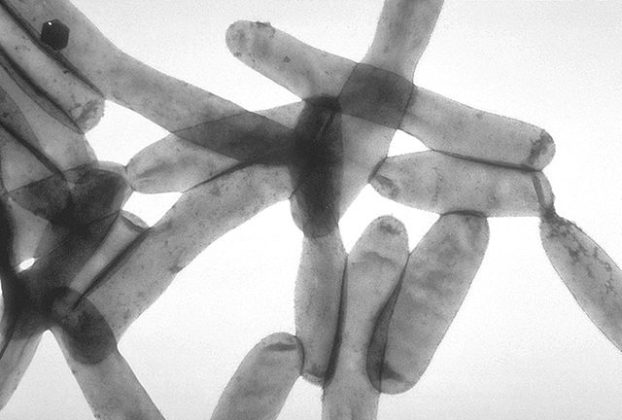by Seth Asher and Caleb Lyvers; Farnsely Middle School (Louisville, KY)
Sam Asher (father of author Seth Asher) almost died last year from a disease called Legionnaires’ or Legionella disease. As he got home from a long travel trip to Phoenix, AZ, he felt unusual and had cold-like symptoms with a low fever.
“I didn’t feel right,” he recalls. “I kept getting worse with a fever up to 105 ºF, weak muscles, projectile vomiting, and excessive sweating.”
He had to go to the hospital where the doctors said he had a 50/50 chance of dying with his severe symptoms. In his right lung, they found pneumonia and it was a rare kind—Legionnaires’. He usually never expresses how he feels so we knew something was wrong because he lost 30 lbs. in 3 days!
According to the Centers for Disease Control (CDC), healthy people do not usually get sick after being exposed to Legionnaires. Those at increased risk of getting sick are: people 50 years or older; current or former smokers; people with a chronic lung disease (like chronic obstructive pulmonary disease or emphysema); people with a weak immune system from diseases like cancer, diabetes, or kidney failure; and people who take dru

gs that suppress (weaken) the immune system (like after a transplant operation or chemotherapy). Asher was at an increased risk of dying because of his semi-smoking habit.
Legionnaires was discovered after an outbreak in 1976 among people who went to a Philadelphia convention of the American Legion. Those who were affected suffered from a type of pneumonia (lung infection) that eventually became known as Legionnaires disease.
About 5,000 cases of Legionnaires disease are reported each year in the United States and 1 in every 10 will die. More illness is found in the summer and early fall, but it can happen any time of year. The bacteria that causes the disease is commonly found in air conditioning units and warm water.
Legionnaires’ Disease is similar to other types of pneumonia and must be diagnosed with a blood test, chest X-Rays, test on lung tissue, and a CT scan on the brain, according to the Mayo Clinic. Legionnaires’ is very deadly because doctors have trouble diagnosing. The disease typically looks like the flu and cold-like symptoms. Many doctors often mistake the disease with the flu. The bacteria most responsible for the disease is a pathogenic group called Gram-negative Bacteria that includes the species Legionella pneumophilla.
Legionnaires’ does have a cure, and in most cases, it can be treated successfully with antibiotics. Healthy people usually get better after being sick with Legionnaires, but hospitalization is often required. Asher took 12-hour doses of Levaquin to help cure him from the deadly disease. The antibiotic really helped him to get back on his feet and strong like normal.
In current research (July, 2016) by principal investigator Mark Edwards and associates from Virginia Tech, Department of Civil and Environmental Engineering, discovered that two clusters of Legionnaires’ were found in Flint, MI after they switched from their regular source of water to a corrosive water source. They believe that this switch caused an increase in iron and other chemicals such as chlorine in the water which resulted in the clusters of Legionnaires’. The researchers did a tap water survey and found L pneumophila in two hospitals that had high water temperatures and older plumbing. This study was important because it shows the connection of increased outbreaks of Legionnaires’ to changes in “municipal water quality and distribution system operation,” say the Virginia Tech researchers.
Asher states, “I came close to death but luckily, I was doing much better about 2 weeks after being diagnosed with the disease. I am doing just fine to this day and I am on my feet working daily and traveling. ”

This work is licensed under a Creative Commons Attribution-NonCommercial-NoDerivs 3.0 Unported License














Very cool article. Great information.
YAYYYYYYYYYYYYY GO SETH AND CALEB